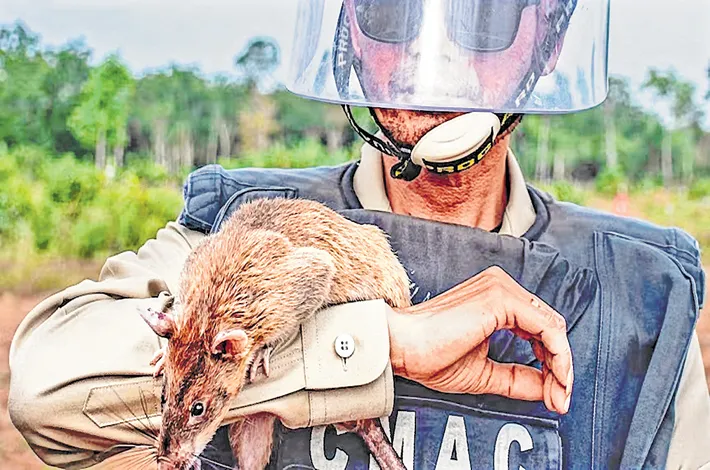Rats help specialists clear land mines in Cambodia
17-07-2025 12:00:00 AM

Anton L Delgado Siem Reap (Cambodia)
Rats may send some squealing, but in Cambodia, teams of the not-so-little critters have become indispensable in helping specialists detect land mines that have killed and maimed thousands in the Southeast Asian country. The African giant pouched rats, which can grow up to 45 cm and weigh up to 1.5 kg, are on the front line, making their way nimbly across fields to signal to their handlers when they get a whiff of TNT, used in most land mines and explosive ordnance.
“Working with rats, I have always found mines and they have never skipped a single one,” said Mott Sreymom, a rat handler at APOPO, a humanitarian demining group that trains and deploys rodent detection teams across the world. “I really trust these mine detection rats,” Mott told AP while on her lunch break after working on a land mine field in Siem Reap.
After 3 decades of conflict in the previous century, remnants of war littered 4,500 sqkm of Cambodian land, as per a survey by the Cambodian Mine Action and Victim Assistance Authority (CMAA) in 2004. This affected all 25 Cambodian provinces and half of the country’s 14,000 villages. As of 2018, CMAA reported 1,970 sqkm remain uncleared. The rats have a sense of smell, making them a favourite at APOPO, which also employs landmine-detecting dog teams.
“Dogs and rats are better compared to other animals because they are trainable,” said Alberto Zacarias, a field supervisor of APOPO’s technical survey dog teams, adding that they are also friendly and easily learn commands. Since demining began in Cambodia in 1992, over 1.1 million mines have been cleared, and 2.9 million other explosive remnants of war, according to a 2022 government demining progress report.








